How to Survive a Tornado
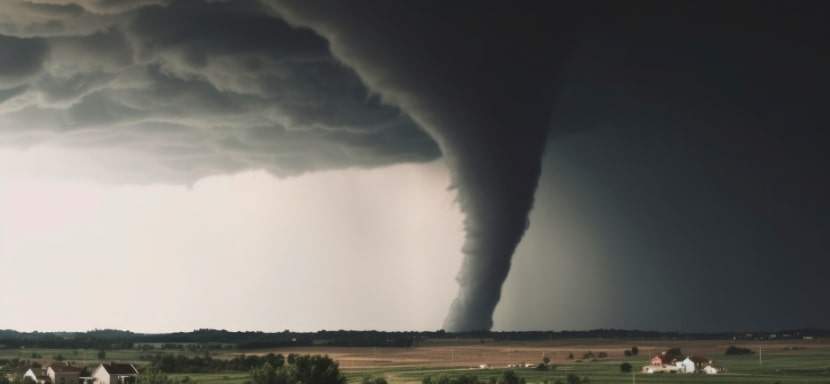
Tornado Safety: How to Survive and Protect Your Family
Learn life-saving strategies to protect yourself and your loved ones from the unpredictable fury of tornadoes.
Tornadoes are among the most unpredictable and destructive natural phenomena. Their sudden and violent nature can wreak havoc on entire communities within moments. Tornadoes can form rapidly, often leaving little time to react, which makes knowing how to survive a tornado vitally important. The intense winds, flying debris, and potential for severe structural damage pose significant threats to life and property.
In recent years, tornadoes have become a frequent topic of concern due to their increasing frequency and intensity in certain regions. These storms can affect anyone, anywhere, and any time, underscoring the necessity of being well-prepared. Nature survival scenarios, such as tornadoes, require specific knowledge and readiness to ensure safety and minimize damage. This guide provides comprehensive advice on preparing for, responding to, and recovering from tornadoes, ensuring you and your loved ones stay safe.
Key Points
- Seek Safe Shelter: Identify and move to a secure area, such as a basement or interior room, away from windows and exterior walls.
- Prepare an Emergency Kit: Assemble essential supplies, including water, non-perishable food, first aid items, and important documents.
- Stay Informed: Monitor weather alerts and updates from reliable sources to act swiftly and stay safe.
10 Life-Saving Tips on How to Survive a Tornado
Here are ten steps to take before, during, and after a tornado to ensure your and your loved ones’ safety. These expert tips will help you prepare, react, and recover effectively.
- Create an Emergency Plan: Develop a clear plan that includes safe shelter locations, emergency contacts, and a communication strategy.
- Build an Emergency Kit: Assemble a kit with essentials like water, non-perishable food, flashlights, batteries, first aid supplies, and essential documents.
- Stay Informed: Sign up for weather alerts and monitor weather reports regularly to stay updated on potential tornado threats.
- Identify Safe Shelter Areas: Choose a basement or an interior room on the lowest floor of your home as your designated shelter area.
- Conduct Regular Drills: Practice tornado drills with your family to ensure everyone knows what to do and where to go during a tornado.
- Protect Yourself Indoors: If a tornado strikes, immediately go to your safe shelter area, crouch down, and cover your head and neck with your arms or a sturdy object.
- Seek Low Ground Outdoors: If caught outside, lie flat in a ditch or low-lying area, covering your head with your arms to protect against flying debris.
- Avoid Overpasses in Vehicles: Never seek shelter under an overpass; instead, find a low-lying area or stay in your car with your head below the windows.
- Check for Hazards After the Tornado: Once the tornado has passed, carefully assess your surroundings for dangers such as downed power lines and unstable structures.
- Communicate and Assist Others: If it is safe to do so, contact loved ones to inform them of your safety and help neighbors and community members in need.
Understanding Tornadoes
What is a Tornado?
A tornado is a violently rotating column of air that extends from a thunderstorm to the ground. They can occur anywhere in the world but are most common in the United States, particularly in “Tornado Alley,” which includes parts of Texas, Oklahoma, Kansas, and Nebraska. Tornadoes vary in size and intensity, with wind speeds ranging from 65 to over 300 miles per hour.
Tornado Formation
Tornadoes form from severe thunderstorms, especially those known as supercells. These storms develop in environments with a strong temperature gradient, with warm, moist air at the surface and cooler, drier air aloft. This setup creates instability and strong wind shear, conditions conducive to the formation of tornadoes. When these conditions are present, a supercell can produce a mesocyclone, a rotating updraft that can lead to the formation of a tornado.
Did You Know?
Tornados are capable of lifting large objects like cars and even homes off the ground, and the most violent tornadoes can travel over 50 miles, leaving a path of destruction in their wake.
Tornado Classifications
Understanding tornado classifications is crucial for recognizing a tornado’s severity and the potential damage it can cause. Tornadoes are classified using the Enhanced Fujita (EF) Scale, which rates tornadoes based on the damage they cause to structures and vegetation.
Here are the classifications:
EF0: Weak Tornadoes
- Wind Speeds: 65-85 mph
- Damage: Light damage; broken tree branches, shallow-rooted trees pushed over, minor roof damage.
EF1: Moderate Tornadoes
- Wind Speeds: 86-110 mph
- Damage: There was moderate damage, including mobile homes that were overturned, roofs stripped, windows broken, and exterior doors damaged.
EF2: Strong Tornadoes
- Wind Speeds: 111-135 mph
- Damage: There was considerable damage, including roofs torn off well-constructed homes, mobile homes destroyed, large trees snapped or uprooted, and cars lifted off the ground.
EF3: Severe Tornadoes
- Wind Speeds: 136-165 mph
- Damage: There was severe damage, including the destruction of entire stories of well-constructed houses, significant structural damage to large buildings, and the debarking of trees.
EF4: Devastating Tornadoes
- Wind Speeds: 166-200 mph
- Damage: Devastating damage; well-constructed houses leveled, cars thrown significant distances, large debris becomes airborne missiles.
EF5: Incredible Tornadoes
- Wind Speeds: Over 200 mph
- Damage: Incredible damage; strong frame houses disintegrated, high-rise buildings have significant structural deformation, incredible phenomena like tree debarking and disintegrating entire neighborhoods.
The Enhanced Fujita (EF) Scale categorizes tornadoes based on their wind speeds and the resulting damage. From weak EF0 tornadoes that cause light damage to incredible EF5 tornadoes that lead to complete destruction, understanding these classifications helps assess the potential impact and necessary precautions for safety.
Preparing for a Tornado
Creating a Tornado Emergency Plan
Preparation is the key to surviving a tornado. Start by developing a comprehensive emergency plan that includes:
- Safe Shelter: Identify a secure place in your home to take cover during a tornado. Ideally, this should be a basement or a small, windowless interior room on the lowest floor.
- Emergency Contacts: Keep a list of emergency contacts and ensure everyone in your household knows how to reach them.
- Communication Plan: Establish a communication plan in case family members are separated during a tornado. Agree on a meeting place and use text messages or social media to communicate, as phone lines may be down or overloaded.
Building an Emergency Kit
An emergency kit is essential for surviving the aftermath of a tornado.
Your kit should include:
- Water: At least one gallon per person per day for three days.
- Non-perishable Food: A three-day supply of food that doesn’t require cooking.
- First Aid Supplies: Bandages, antiseptic wipes, pain relievers, and prescription medications.
- Flashlights and Batteries: In case of power outages.
- Important Documents: Copies of insurance policies, identification, and bank records in a waterproof container.
- Personal Hygiene Items: Soap, hand sanitizer, and sanitary supplies.
- Tools and Supplies: A multi-tool, duct tape, plastic sheeting, and a whistle to signal for help.
Staying Informed
Staying informed about weather conditions is crucial. Regularly check weather reports and sign up for emergency alerts on your phone. A NOAA Weather Radio is a reliable source of information, as it broadcasts continuous weather information directly from the nearest National Weather Service office. Pay attention to watches and warnings:
- Tornado Watch: Conditions are favorable for tornadoes to develop.
- Tornado Warning: A tornado has been sighted or indicated by weather radar. Take immediate action to find safe shelter.
Identifying Safe Shelter Areas
Choosing the Right Location
The location where you choose to shelter can significantly affect your safety during a tornado. The best options include:
- Basement: The safest place in your home is an underground space, such as a basement or storm cellar.
- Interior Rooms: If you don’t have a basement, choose a small, windowless interior room on the lowest floor, such as a bathroom or closet.
- Storm Shelters: Consider installing a storm shelter or safe room that meets FEMA standards. These are specially designed to provide near-absolute protection during extreme weather events.
Safe Shelter Guidelines
Ensure your chosen shelter area is well-prepared:
- Reinforcement: Strengthen the walls and roof of your shelter area to withstand high winds and flying debris.
- Stock Supplies: Keep your emergency kit in your shelter area.
- Practice Drills: Conduct regular tornado drills so everyone knows where to go and what to do.
During a Tornado: Immediate Actions
When You’re Indoors
When a tornado warning is issued, act quickly and follow these steps:
- Seek Shelter Immediately: Go to your designated safe room or shelter area.
- Protect Yourself: Shield yourself from debris by using heavy furniture, mattresses, or blankets. If possible, get under a sturdy piece of furniture.
- Stay Low: Crouch down and cover your head and neck with your arms to protect against flying debris.
When You’re Outdoors
If you’re caught outside with no shelter nearby, try to find a low-lying area such as a ditch or depression:
- Find Low Ground: Lie flat in a ditch or low-lying area, covering your head with your arms.
- Cover Your Head: Use your arms or any available object to protect your head and neck.
In a Vehicle
If you’re in a vehicle, your options depend on the circumstances:
- Avoid Overpasses: Do not seek shelter under an overpass, as it can create a wind tunnel effect and increase danger.
- Seek Shelter: If you can safely reach a sturdy building immediately. If not, park the vehicle, stay inside with the seat belt on, and keep your head below the windows, covering yourself with a blanket or jacket if possible.
After the Tornado
Checking for Safety
Once the tornado has passed, it’s important to stay cautious:
- Assess Surroundings: Carefully check your surroundings for hazards like downed power lines, broken gas lines, and unstable structures.
- Avoid Danger Zones: Do not enter damaged buildings until they have been declared safe by authorities.
- Stay Informed: Continue to listen to weather reports and emergency updates.
Communicating with Loved Ones
After ensuring your immediate safety, contact family and friends:
- Use Text or Social Media: Use text or social media to let others know you’re safe, as phone lines may be congested.
- Check on Neighbors: If it’s safe, check on your neighbors, especially older people or those with disabilities.
Helping Others
In the aftermath of a tornado, community support is crucial:
- Assist Neighbors: Help those needing assistance, especially the elderly, injured, or disabled.
- Volunteer: If you can, volunteer with local emergency services or community organizations to aid in recovery efforts.
Tornado Safety Myths Debunked
Understanding tornado myths is crucial for safety. This list debunks common misconceptions about tornadoes, providing accurate information to help you make informed decisions during severe weather events.
- Seek Shelter under an Over-Pass: Stopping under a bridge during a tornado is extremely dangerous due to flying debris, strong winds, and potential structural failure.
- Tornadoes Never Strike Twice: Tornadoes can hit the exact location multiple times, as seen in Cordell, Kansas, and Guy, Arkansas.
- Big Cities and Their Tall Buildings are Protected from Tornadoes: Cities are not immune to tornadoes; many U.S. cities have been directly hit.
- Large Lakes Protect Nearby Areas from Tornadoes: Cold water does not prevent tornadoes; storms driven by larger forces can still produce tornadoes over lakes.
- Mountains, River Valleys, and Large Lakes Inhibit Tornadoes: Tornadoes can cross mountains and large bodies of water, proving these features do not prevent their formation.
- Seeking Shelter in the Southwest Corner of Your Home Will Protect You: Tornadoes can move in any direction, making any basement part equally unsafe.
- Open Windows Before a Tornado Strike to Equalize Pressure Inside the House: Opening windows is dangerous and ineffective, wasting precious time and risking injury.
- Tornadoes Only Occur in the Late Spring and Summer: Tornadoes can occur at any time of day or year, even in winter months in some regions.
- The Shape and Size of the Tornado Determines Its Strength: The visible shape of a tornado does not indicate its strength; only damage assessments and wind measurements can do that.
- Mobile Homes Attract Tornadoes: Mobile homes are more vulnerable to tornado damage, leading to the misconception that they attract tornadoes.
FAQs About Tornados
Can tornadoes be predicted?
While meteorologists can forecast conditions conducive to tornado formation, predicting a tornado’s exact time and location remains challenging. Tornado warnings are issued based on observed conditions and radar indications.
What's the difference between a tornado watch and a tornado warning?
A tornado watch means that conditions are favorable for the formation of tornadoes. A warning means that a tornado has been spotted or indicated by weather radar, and immediate action should be taken to find shelter.
How fast do tornadoes travel?
Tornadoes typically travel 10 to 20 miles per hour, but some can move as fast as 70 miles per hour. Their speed and direction can change rapidly.
What's the best way to stay informed during a tornado?
Weather radios, mobile alerts, and local news are reliable sources for real-time updates. It’s essential to have multiple ways to receive warnings in case one method fails.
What should I do if I'm in a mobile home during a tornado?
Mobile homes are not safe during tornadoes. If you live in a mobile home, plan to evacuate to a nearby sturdy building or storm shelter as soon as a tornado watch is issued.
Can animals sense tornadoes?
Some anecdotal evidence suggests animals may exhibit unusual behavior before a tornado, but relying on pets for tornado warnings is not advisable. Always rely on official weather alerts and warnings.
Conclusion on Tornado Survival
Surviving a tornado requires preparation, quick action, and staying informed. These violent storms can form rapidly without warning, leaving little time to react. Following these guidelines can increase your chances of staying safe during these powerful natural events. Preparation involves having a well-thought-out emergency plan, knowing where to seek shelter, and preparing an emergency kit.
Quick action is critical once a tornado warning is issued; immediately move to your designated safe area and protect yourself from debris. Staying informed means regularly checking weather updates and understanding the difference between a tornado watch and a warning.
Remember, knowledge and preparation are your best defenses against tornadoes, ensuring that you and your loved ones are ready to respond swiftly and effectively when a tornado strikes.
Most Damaging Tornadoes in World History
This list highlights some of the most devastating tornadoes in world history, arranged by date from oldest to newest. These tornadoes caused significant loss of life and widespread destruction and had profound impacts on the communities they struck.
- Tri-State Tornado, USA (March 18, 1925): The deadliest tornado in U.S. history, it traveled through Missouri, Illinois, and Indiana, killing 695 people and destroying thousands of homes.
- Daulatpur-Saturia Tornado, Bangladesh (April 26, 1989): Considered the deadliest tornado in world history, it caused approximately 1,300 deaths and extensive damage to the towns of Daulatpur and Saturia.
- Madarganj to Mrizapur Tornado, Bangladesh (May 13, 1996): Another devastating tornado in Bangladesh, resulting in 700 deaths and leaving thousands homeless.
- Bridge Creek-Moore Tornado, USA (May 3, 1999): This F5 tornado struck Oklahoma, causing 36 deaths, injuring nearly 600 people, and resulting in approximately $1 billion in damages.
- Joplin Tornado, USA (May 22, 2011): One of the deadliest tornadoes in recent U.S. history, it killed 158 people, injured over 1,000, and caused nearly $3 billion in damages.
- El Reno Tornado, USA (May 31, 2013): At 2.6 miles wide, it was the widest tornado ever recorded. It struck Oklahoma, causing eight deaths and extensive damage.
- Moore Tornado, USA (May 20, 2013): An EF5 tornado that devastated Moore, Oklahoma, killing 24 people and causing over $2 billion in damages.
- Chapeco Tornado, Brazil (April 20, 2015): This rare tornado caused extensive damage to the city of Chapeco, resulting in several deaths and significant property destruction.
- Mymensingh-Tangail Tornado, Bangladesh (April 4, 2016): A severe tornado struck Mymensingh and Tangail districts, causing 40 deaths and widespread damage to homes and infrastructure.
- Jonesboro Tornado, USA (March 28, 2020): This tornado struck Jonesboro, Arkansas, causing significant damage to the city, injuring 22 people, and leading to millions of dollars in damages.
More Tornado Safety Tips
More Nature’s Wrath Scenarios
How to Survive a Wildfire
Wildfires are one of nature’s most unpredictable and destructive forces, and they can engulf entire…
How to Survive a Landslide
Landslides are one of nature’s sudden, unexpected acts, like finding a $20 bill in an old jacket, but far…
How to Survive a Hurricane
Hurricanes are nature’s way of reminding us who’s in charge—think of it as the weather throwing a…
How to Survive a Tsunami
Surviving a tsunami is a terrifying thought, but it’s something we should all be aware of, especially if we…
How to Survive a Lightning Strike
Thunderstorms are a mesmerizing display of nature’s power, but they also bring the terrifying threat…
Recent Survival Posts
How to Survive a Layoff
Layoffs feel personal—even when they’re not. One day, you’re responding to Slack messages and forwarding…
How to Survive a Drug Test
I never imagined I’d be so emotionally invested in a paper cup. But there I was, standing under the fluorescent…
How to Survive an Interrogation
If you’ve ever been caught in the crosshairs of an overly enthusiastic mall cop or stared down by someone…
How to Survive a Nightclub Shooting
Nightclubs pulse with life—lights flashing, music pounding, bodies packed tight on the dance floor. It’s a place to…
How to Survive a Bachelor Party
A bachelor party is a delicate mix of celebration, chaos, and questionable decision-making, wrapped…
More Nature’s Warth Survival Scenarios
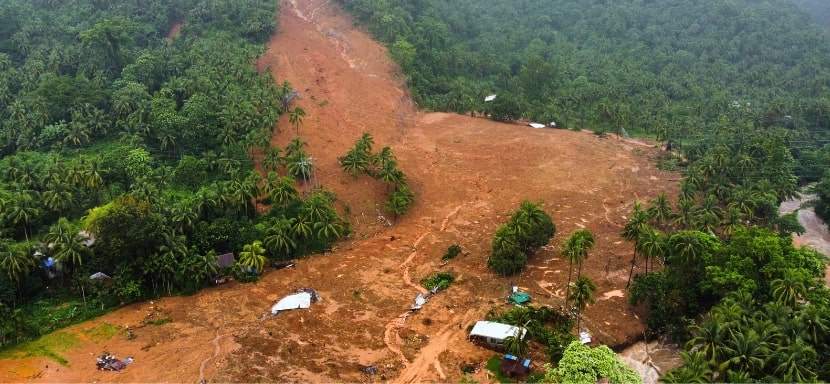
How to Survive a Landslide
Landslides are one of nature's sudden, unexpected acts, like finding a $20 bill in an old jacket—only there's no thrill of discovery, just destruction. They strike without much warning, sweeping away everything in their path—homes, roads, vehicles, and, tragically,...
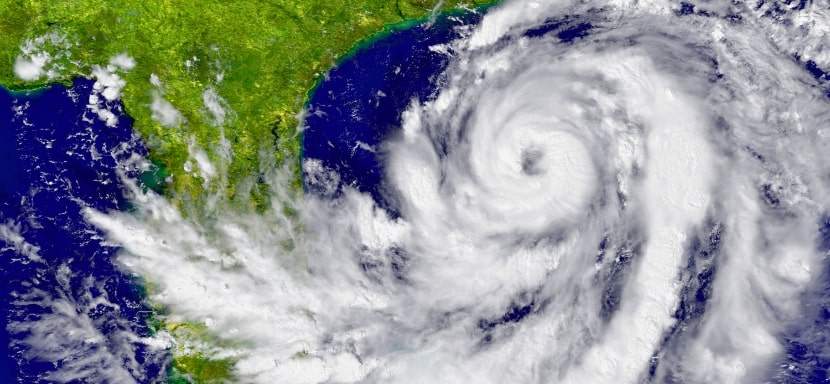
How to Survive a Hurricane
Hurricanes are nature's way of reminding us who's in charge—think of it as the weather throwing a tantrum. The winds howl, the rain pours, and trees bend until they snap. But while hurricanes are frightening, surviving them is possible with good preparation, clear...
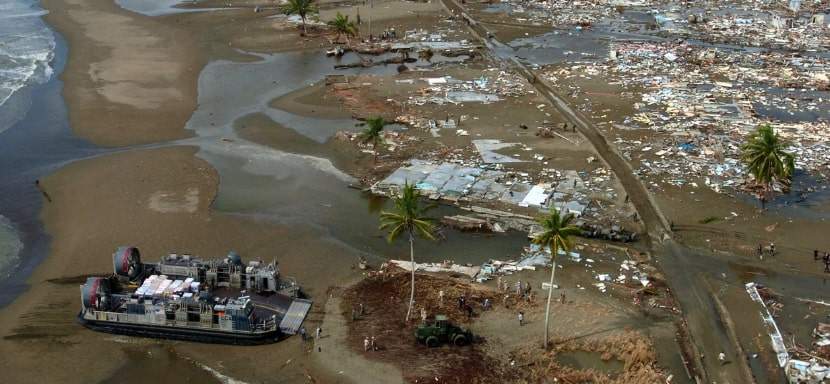
How to Survive a Tsunami
Surviving a tsunami is a terrifying thought, but we should all be aware of it, especially if we live near coastlines. A tsunami can strike with little warning, and the key to making it through alive is to know what to do before, during, and after the waves hit. Here,...
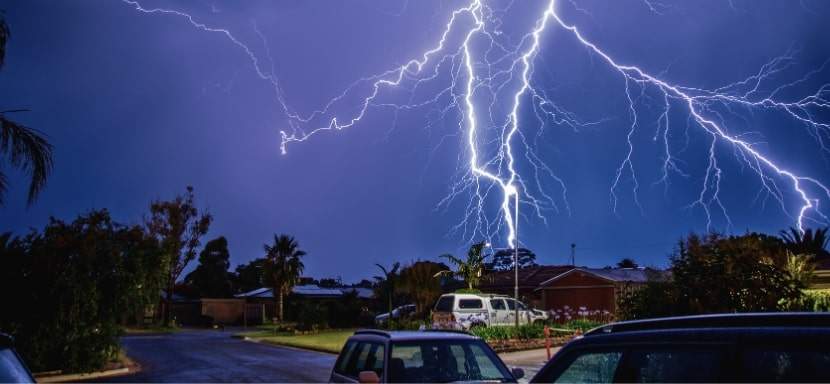
How to Survive a Lightning Strike
Thunderstorms are a mesmerizing display of nature's power, but they also bring the terrifying threat of lightning strikes. Each year, thousands of people worldwide are affected by lightning, with severe injuries and even fatalities resulting from these sudden...

How to Survive a Heat Wave
How to Beat the Heat: Essential Strategies for Surviving a Heat Wave Heat waves are the deadliest weather-related disaster in the United States, causing more annual fatalities than hurricanes, tornadoes, and floods. Heat waves can be overwhelming, making us feel like...
More Survival Scenarios

How to Survive a Layoff
When the Floor Falls Out: The Reality of a Layoff Layoffs feel personal—even when they're not. One day, you're responding to Slack messages and forwarding emails. Next, you're staring at your monitor as it logs you out... for good. Whether it's a restructuring, a...

How to Survive a Drug Test
The Cup, The Room, The Truth I never imagined I’d be so emotionally invested in a paper cup. But there I was, standing under the fluorescent hum of a strip-mall clinic, trying to recall the last time I ate a poppy seed bagel. That’s the thing about drug tests—they...

How to Survive an Interrogation
If you've ever been caught in the crosshairs of an overly enthusiastic mall cop or stared down by someone in a uniform with a clipboard and a glare, you’ve felt it — the chilly fingers of interrogation anxiety. And while most of us imagine interrogation scenes as...

How to Survive a Nightclub Shooting
Nightclubs pulse with life—lights flashing, music pounding, bodies packed tight on the dance floor. It’s a place to escape, feel the rhythm, and lose yourself in the crowd. But that same energy can turn deadly in seconds, transforming a night of fun into one of the...

How to Survive a Bachelor Party
A bachelor party is a delicate mix of celebration, chaos, and questionable decision-making, wrapped in the noble intention of sending the groom off into married life with a night he’ll (hopefully) remember. It’s a ritual as old as time—well, as old as men deciding...

How to Survive Your First Time at the Gym
Walking into a gym for the first time can feel like stepping into an alien world. The machines hum with purpose, the regulars move confidently, and you’re left standing there, clutching your water bottle, wondering whether you’re in the right place—or on the right...

How to Survive a Worldwide Communications Breakdown
Imagine waking up to silence. Your phone doesn’t buzz, your email won’t load, and even your local radio station crackles with static. A worldwide communications breakdown has hit. What next? For many, this doomsday scenario may sound like the opening lines of a...
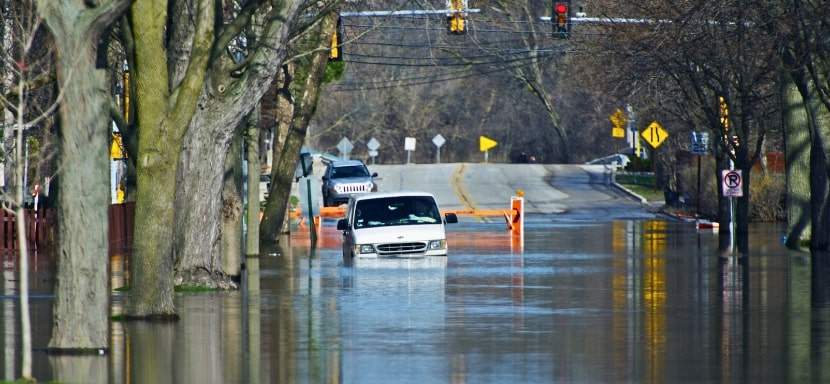
How to Survive a Flash Flood While Driving
Surviving a flash flood while driving requires quick thinking, calmness, and a solid plan to ensure your safety. Preparation can make all the difference between a close call and a catastrophe in emergencies like this. This guide provides practical advice to protect...

How to Build an Emergency Kit
Emergencies don’t knock politely at the door. They barge in, uninvited, like a distant relative with a penchant for drama, turning your world upside down without warning. Whether it’s a power outage, a natural disaster, or an unexpected evacuation, the key to staying...
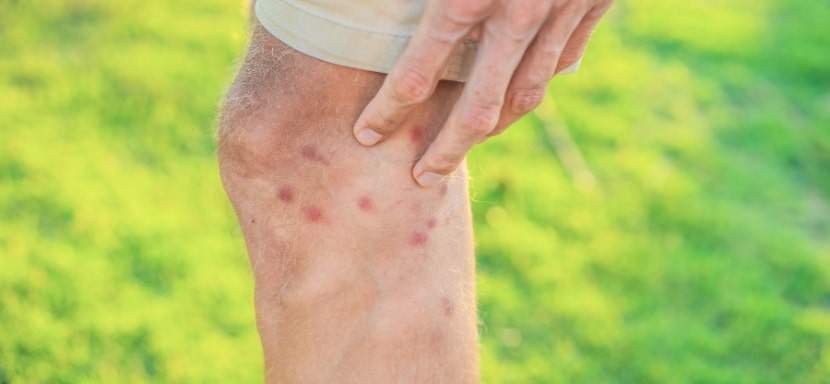
How to Protect Yourself From Insects in the Wild
There’s nothing like being out in the wild—birdsong echoing through the trees, the fresh scent of earth, and a deep sense of peace that makes you think, “Ah, this is what life is about.” But then comes the buzzing. Mosquitoes, ticks, and flies swoop in like uninvited...
